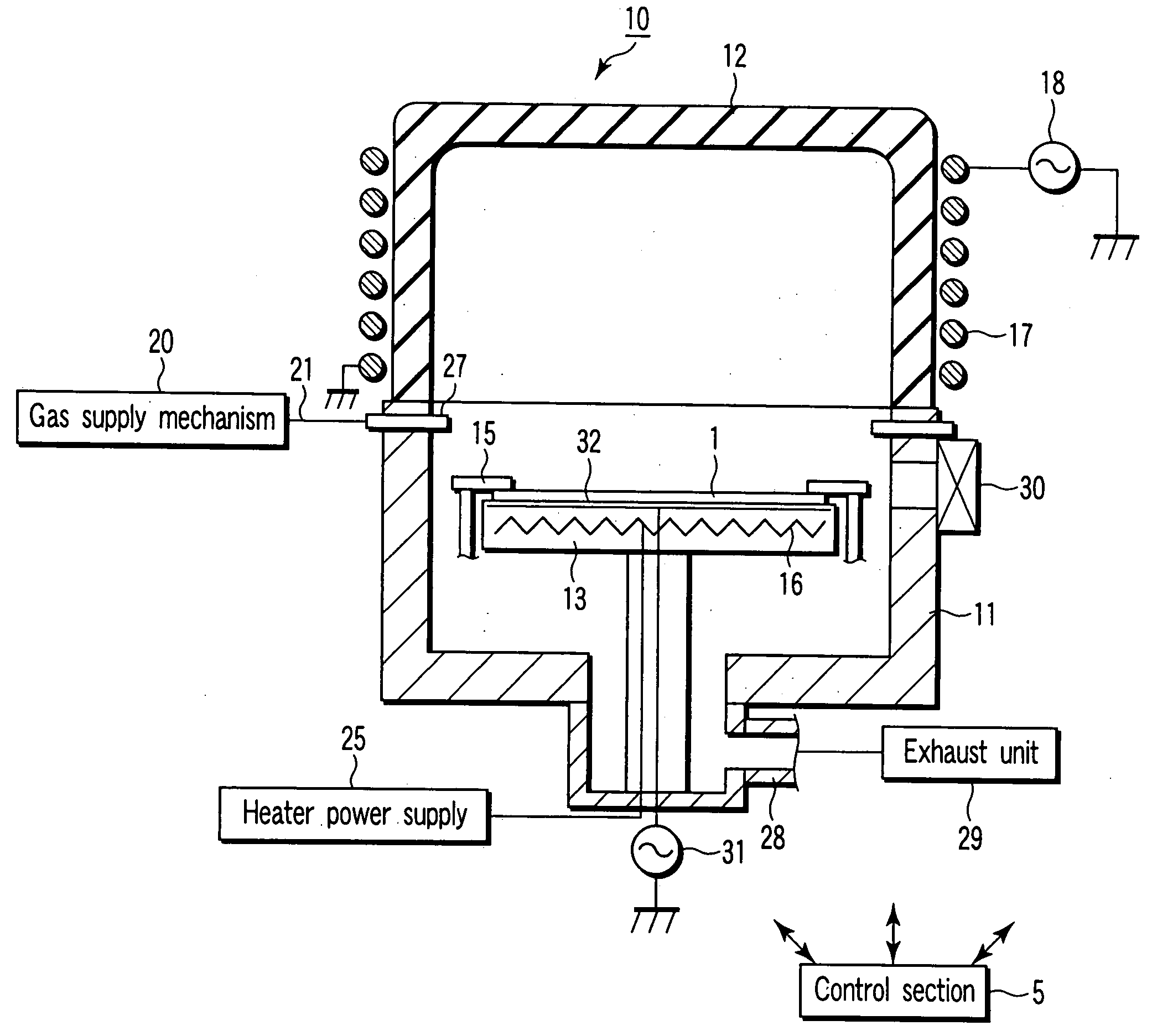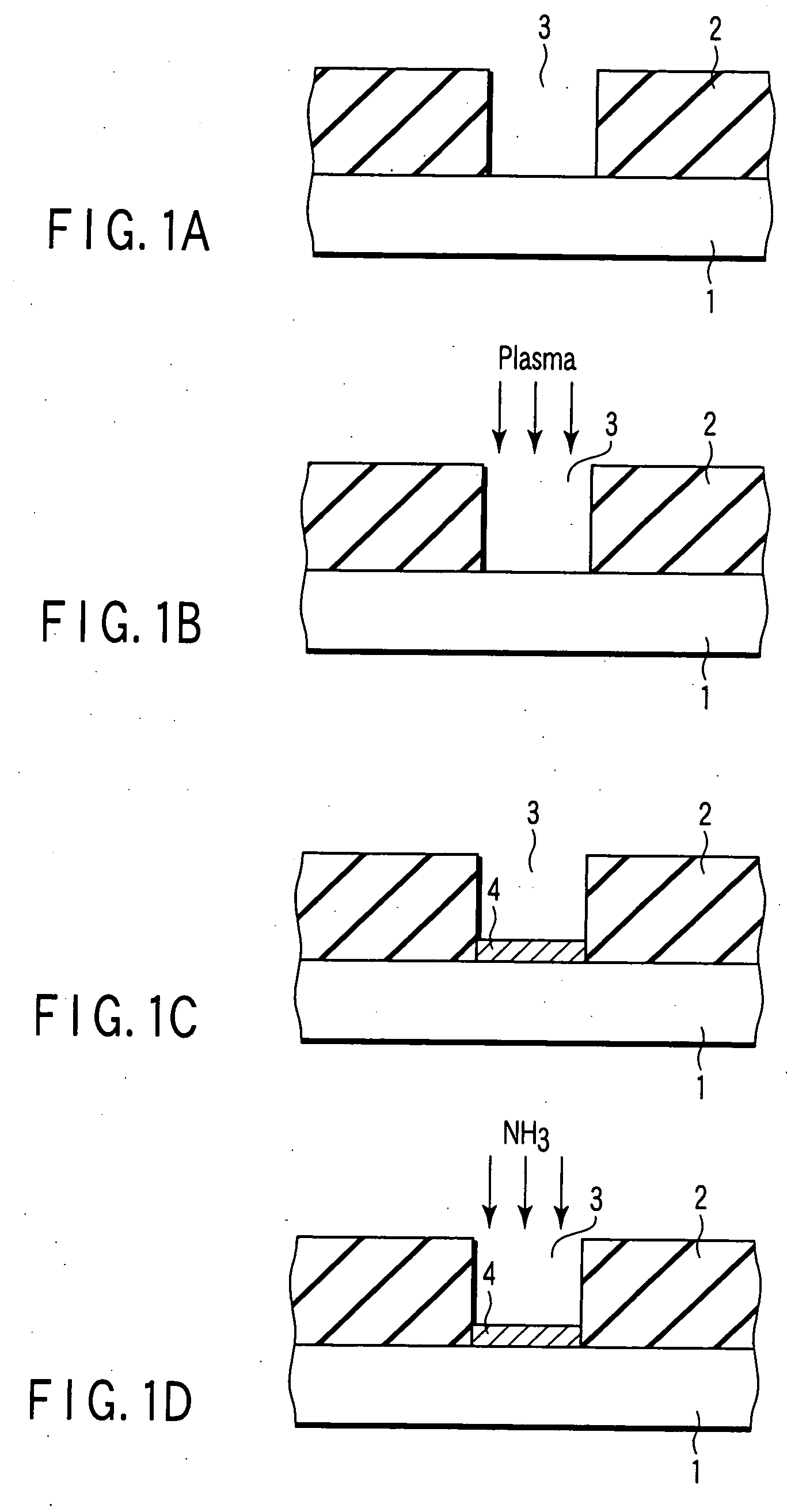Film formation method
a film and formation method technology, applied in the field of film formation methods, can solve the problems of difficult formation of tisisub>2 /sub>film consisting mainly of tisisub>2 /sub>crystals less uniform in grain size, and achieve good interface morphology
- Summary
- Abstract
- Description
- Claims
- Application Information
AI Technical Summary
Benefits of technology
Problems solved by technology
Method used
Image
Examples
first embodiment
(1) Experiment for First Embodiment
[0105] In this experiment, a plasma process using an RF was first performed on an Si wafer surface in the apparatus shown in FIG. 2. As regards the conditions of the process, the RF power supply 18 was set at a power level of 500W, the RF power supply 31 for bias was set at a power level of 800W to form Vdc at −530V. Thereafter, using the apparatus shown in FIG. 3, a process was performed for 31 seconds to form a TiSi2 film having a thickness of 43 nm, while the susceptor temperature was set at 640° C., and the wafer temperature was set at 620° C.
[0106]FIG. 8 shows an X-ray diffraction profile obtained in this experiment. As shown in FIG. 8, the TiSi2 film formed in accordance with the first embodiment rendered a high peak intensity of TiSi2 of the C54 crystal structure, wherein C54 formation of about 70% was confirmed.
[0107]FIG. 9 shows an SEM image of a cross section of this sample at a hole portion. The image of FIG. 9 shows a state after etch...
second embodiment
(2) Experiment for Second Embodiment
[0108] In this experiment, natural oxide films were removed in the apparatus shown in FIG. 2. Thereafter, a TiSi2 film is formed in the apparatus shown in FIG. 3, while TiCl4 was supplied for 10 seconds prior to plasma generation. A process was performed for 20 seconds to form a TiSi2 film having a thickness of 27 nm, while the susceptor temperature was set at 640° C., and the wafer temperature was set at 620° C.
[0109]FIG. 10 shows an X-ray diffraction profile obtained in this experiment. As shown in FIG. 10, a peak of TiSi2 of the C54 crystal structure was observed, and thus C54 formation was confirmed.
[0110]FIG. 11 shows an SEM image of a cross section of this sample at a hole portion. The image of FIG. 11 shows a state after etching was performed with hydrofluoric acid to remove the TiSi2 film by the etching. As shown in FIG. 11, the portion where the TiSi2 film was present was thin and uniform, so it is estimated that the crystal grain size ...
PUM
| Property | Measurement | Unit |
|---|---|---|
| Temperature | aaaaa | aaaaa |
| Time | aaaaa | aaaaa |
| Flow rate | aaaaa | aaaaa |
Abstract
Description
Claims
Application Information
 Login to View More
Login to View More - R&D
- Intellectual Property
- Life Sciences
- Materials
- Tech Scout
- Unparalleled Data Quality
- Higher Quality Content
- 60% Fewer Hallucinations
Browse by: Latest US Patents, China's latest patents, Technical Efficacy Thesaurus, Application Domain, Technology Topic, Popular Technical Reports.
© 2025 PatSnap. All rights reserved.Legal|Privacy policy|Modern Slavery Act Transparency Statement|Sitemap|About US| Contact US: help@patsnap.com



